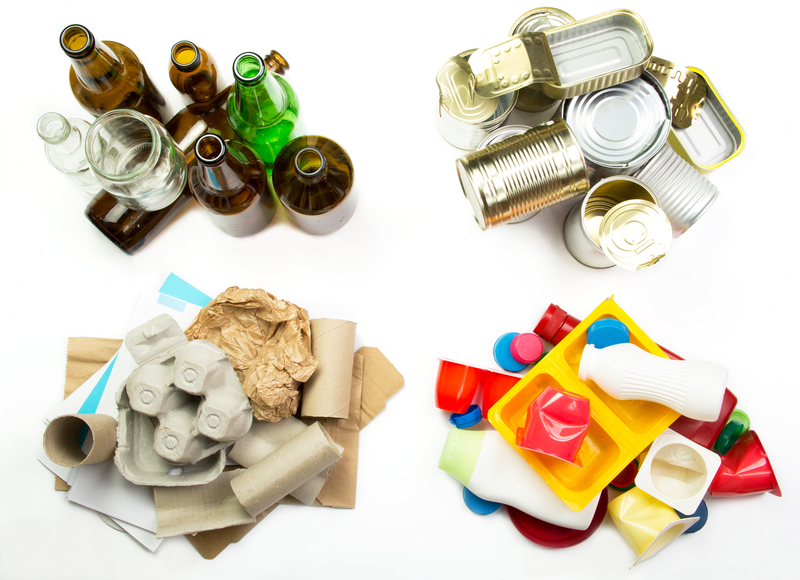How to Avoid Common Mistakes in PPE Waste Disposal
In the wake of global health concerns, the use of personal protective equipment (PPE) has skyrocketed. From masks to gloves, face shields to gowns, these items play a crucial role in safeguarding health. However, the sharp uptick in PPE use has created a new environmental challenge: proper PPE waste disposal. Mistakes in managing discarded PPE can lead to pollution, health hazards, and regulatory issues. In this guide, you'll learn how to avoid common PPE waste disposal mistakes, ensuring safety, compliance, and environmental responsibility.
Understanding the Importance of Correct PPE Waste Management
As organizations and individuals strive to protect themselves, the correct disposal of PPE is often overlooked. Incorrect disposal of PPE waste can cause:
- Environmental pollution: PPE materials such as plastics can persist for decades.
- Health risks to waste handlers and the general public due to potential contamination.
- Legal consequences for businesses that ignore regulations.
Why is proper PPE waste disposal so crucial? Because it not only protects people from infection but also ensures that our natural ecosystems are shielded from unnecessary plastic and chemical exposure.

Most Common Mistakes in PPE Waste Disposal
Everyday errors in disposing PPE waste can have serious ramifications. Below are the most frequent mistakes businesses and individuals make--and how to avoid them.
1. Mixing PPE Waste with General Waste
- Mistake: Many people toss used masks, gloves, or gowns into the regular trash.
- Consequences: This practice can expose waste handlers and the public to infectious agents and increases contamination in recycling streams.
- Solution: Always separate PPE waste from general trash. Use clearly marked bins specifically for PPE disposal, especially in workplaces, healthcare, or high-traffic locations.
2. Improper Segregation of Hazardous and Non-Hazardous PPE
- Mistake: Failing to distinguish between contaminated (hazardous) and non-contaminated (non-hazardous) PPE waste.
- Consequences: Results in unnecessary exposure risk and drives up disposal costs.
- Solution: Train staff and users to identify hazardous PPE (e.g., worn by those in direct medical contact) and segregate accordingly into color-coded bags (often yellow or red for hazardous).
3. Disposing PPE Waste in Recycling Bins
- Mistake: Throwing PPE items into recycling containers, mistakenly believing they are recyclable.
- Consequences: Contaminates the recycling stream and poses health risks to workers in recycling facilities.
- Solution: Remember, most single-use PPE like masks and gloves are not recyclable. They belong in designated PPE waste bins, not recycling bins.
4. Overfilling PPE Waste Containers
- Mistake: Allowing containers or bags to overflow with used PPE.
- Consequences: Spillage increases the risk of contamination and makes collection difficult and hazardous.
- Solution: Regularly monitor PPE waste bins and schedule frequent disposal to avoid overfilling.
5. Not Labeling PPE Waste Containers Properly
- Mistake: Failing to clearly mark bins or bags as "PPE Waste."
- Consequences: Leads to confusion, accidental mishandling, or mixing with inappropriate waste streams.
- Solution: Use bold, easy-to-read labels. If possible, utilize color-coded systems that are universally understandable.
Best Practices for Successful PPE Waste Disposal
To avoid common PPE waste disposal mistakes, adopt proven strategies that prioritize both compliance and environmental stewardship.
Educate and Train Staff Regularly
Regular training helps all staff and users understand the correct procedures for PPE disposal. Cover topics such as:
- The difference between general, hazardous, and recyclable waste.
- Risks associated with mishandling PPE waste.
- How to properly segregate and store used PPE.
Use visual aids--like posters or infographics--near waste stations as reminders.
Implement Clearly Marked Waste Collection Points
- Set up separate, well-labeled bins for PPE waste in high-traffic and relevant areas.
- Use bold colors (often yellow or red) that differentiate PPE waste from other disposed materials.
- Ensure lids are hands-free, if possible, to minimize cross-contamination.
Use Correct Bags and Containers
- PPE waste should go into strong, leak-proof bags or containers that can be tightly sealed.
- If handling hazardous PPE, use bags recognized for medical or biohazardous waste (such as yellow coded bags).
- Avoid thin or easily torn bags that put handlers at risk.
Schedule Routine Waste Collection
Overflowing bins invite accidents. Set up a regular collection schedule or use a waste management service specializing in PPE and medical waste disposal for larger facilities.
Special Considerations for PPE Waste Disposal in Different Settings
Different environments demand specific PPE disposal protocols. Here's how to avoid mistakes in various settings:
Healthcare Facilities
- Strictly segregate infectious PPE waste from general trash and non-infectious waste.
- Follow national or local medical waste disposal laws precisely.
- Deploy sharps containers, even for PPE with sharp components, to prevent needlestick injuries.
Offices and Workplaces
- Provide accessible PPE bins near exits, restrooms, and break areas.
- Encourage proper hand hygiene after disposing of used PPE.
- Regularly disinfect waste stations to prevent secondary contamination.
Public Spaces (Schools, Transit, Events)
- Install PPE-specific disposal points at entrances and high-traffic locations.
- Post easy-to-understand signage, using illustrations if possible.
- Enforce regular clearing and cleaning of PPE bins by trained personnel.
Environmental Impact of Poor PPE Waste Disposal
Improper PPE disposal contributes to several serious environmental problems:
- Microplastic pollution from degraded masks and gloves accumulating in oceans and waterways.
- Wildlife hazards, as animals encounter and ingest or become entangled in PPE items.
- Unsightly urban and natural landscapes, affecting both community health and aesthetics.
Responsible PPE waste management is crucial for more than just public health--it's a vital part of fighting global plastic pollution.
Legal Requirements and Compliance
Most countries have regulations governing how PPE waste is handled, especially in medical and commercial environments. Non-compliance can lead to hefty fines and legal troubles. Some legal essentials include:
- Correct labeling and segregation of hazardous waste.
- Maintaining records of PPE waste volumes and collection dates, especially for regulated entities.
- Using only licensed PPE waste disposal services for collection and treatment.
Always stay updated on your region's PPE and medical waste management laws to avoid pitfalls.
Innovative Approaches to PPE Waste Management
With mounting concerns over PPE waste, innovative solutions are emerging:
- Reusable PPE: Where possible, shift toward washable or sterilizable PPE to reduce single-use items.
- PPE Recycling Programs: Some companies and municipalities are developing ways to recycle used PPE safely. Always ensure programs are certified and compliant.
- Biodegradable PPE: These products, made from eco-friendlier materials, can mitigate environmental impact when available.
If adopting new waste technologies or materials, ensure that all staff are trained--and inform users about the correct disposal method for each type.
How to Create an Effective PPE Disposal Policy
For businesses, institutions, or any group managing large amounts of PPE, a clear waste disposal policy is essential. Here's how you can develop a policy that helps avoid common mistakes:
- Assess your PPE waste stream: Determine the quantities and types of PPE waste generated in your setting.
- Create simple, visual instructions: Draft easy-to-follow guidelines and display them prominently near waste points.
- Appoint a PPE Waste Coordinator: Assign a responsible person or team to oversee disposal operations and training.
- Conduct regular audits: Check for compliance, bin integrity, and opportunities for improvement on a scheduled basis.
- Review and revise: Update your policy to reflect changing regulations, technologies, and onsite experiences.

PPE Waste Disposal FAQs
- Can single-use PPE be recycled?
- Generally, no. Most single-use PPE (face masks, gloves) cannot be recycled in standard programs due to contamination and material type. Specialized programs may exist, but verify first.
- How often should PPE waste bins be emptied?
- Ideally, daily--or more frequently in high-use areas--to prevent overflow. Follow local recommendations for biohazardous or regulated waste.
- Is burning PPE waste recommended?
- Open burning is not recommended due to toxic emissions. Incineration should only be done in certified facilities following environmental standards.
- What should I do if I see PPE waste in the wrong place?
- Report it to the appropriate authority or facility management. Do not handle it unless trained and equipped with suitable protection.
Conclusion: Safeguard Health and the Environment with Proper PPE Waste Disposal
Learning how to avoid common PPE waste disposal mistakes is more than a regulatory requirement: it's an ethical imperative. Whether you're a business owner, healthcare worker, teacher, or concerned citizen, understanding and practicing correct PPE disposal helps prevent disease transmission, protect waste handlers, and preserve our planet.
By educating yourself and your community, setting up proper disposal stations, and following local laws, you can make a real difference in the global PPE waste crisis. Start today and commit to best practices for safe and sustainable PPE management.